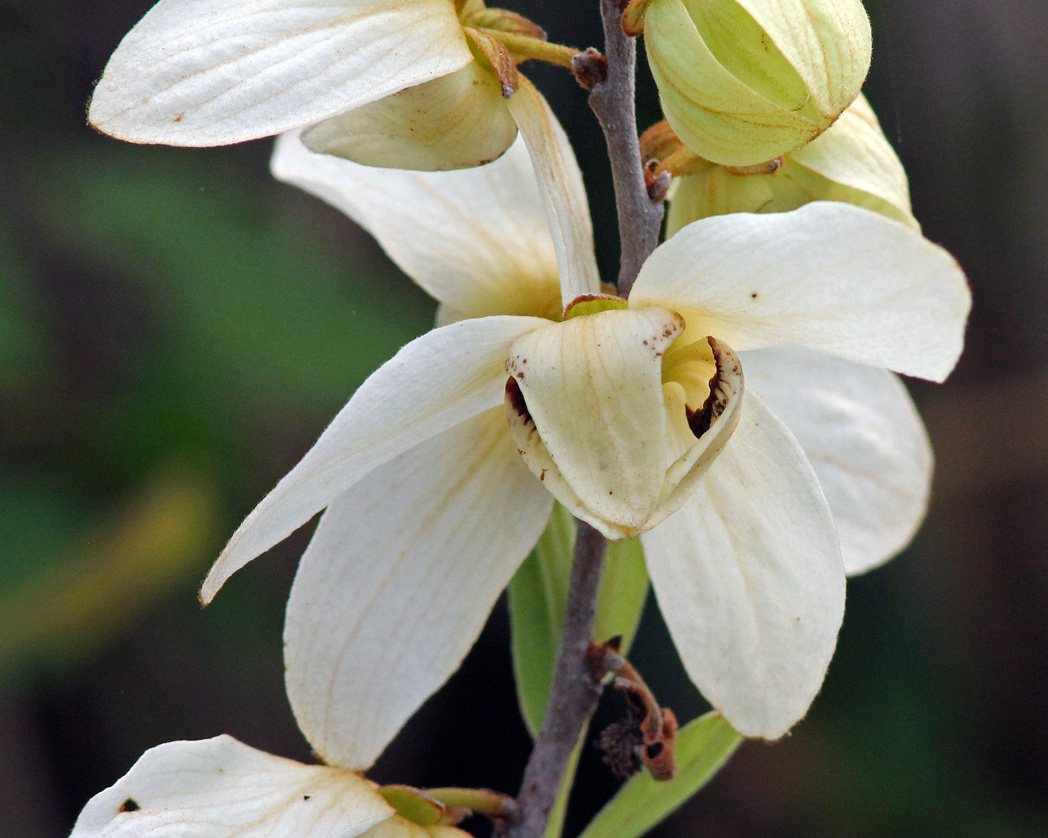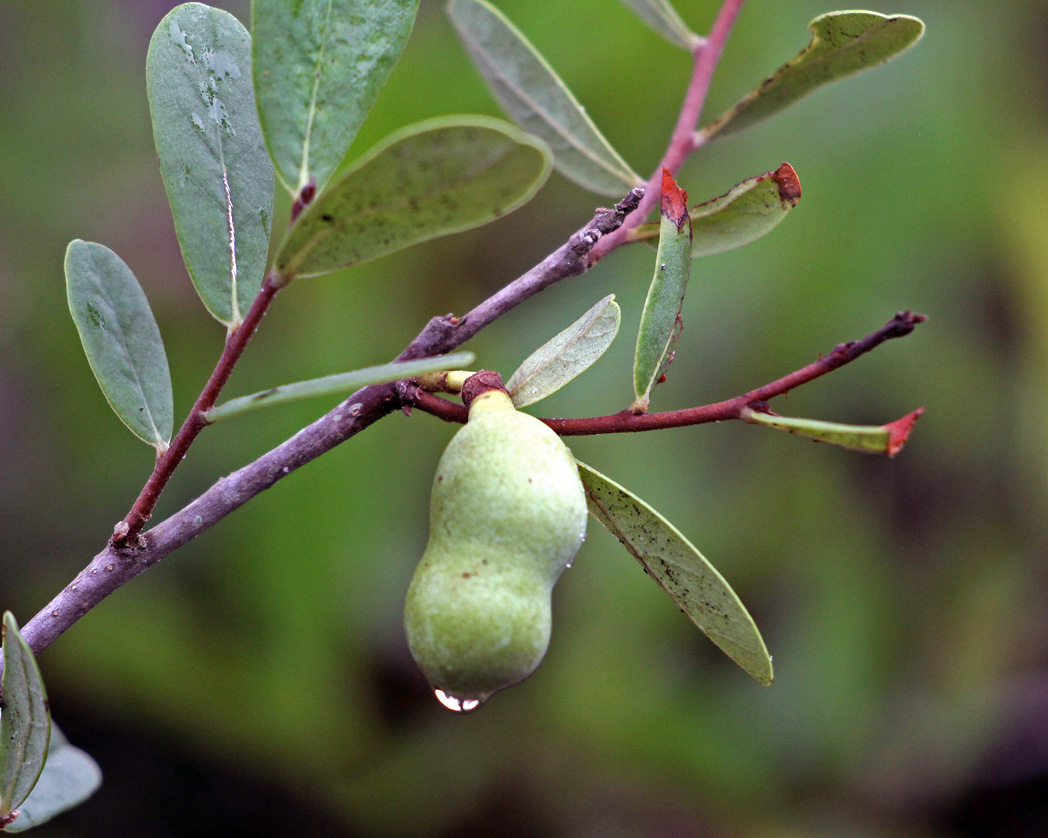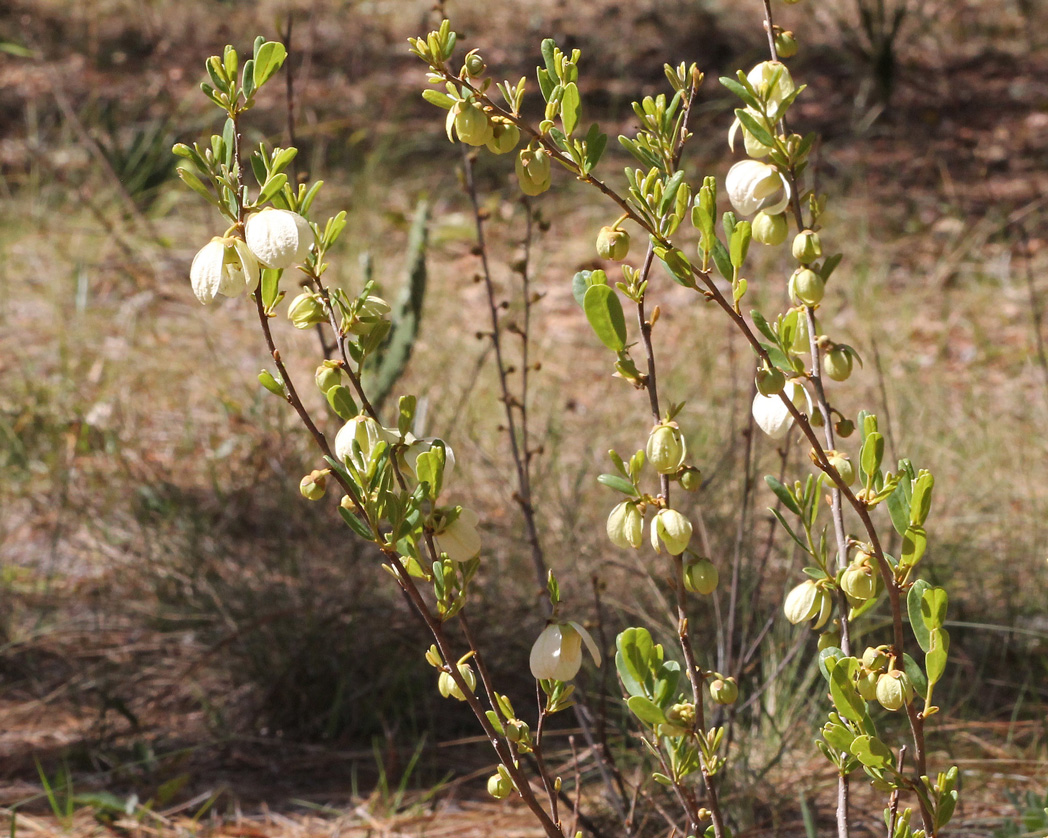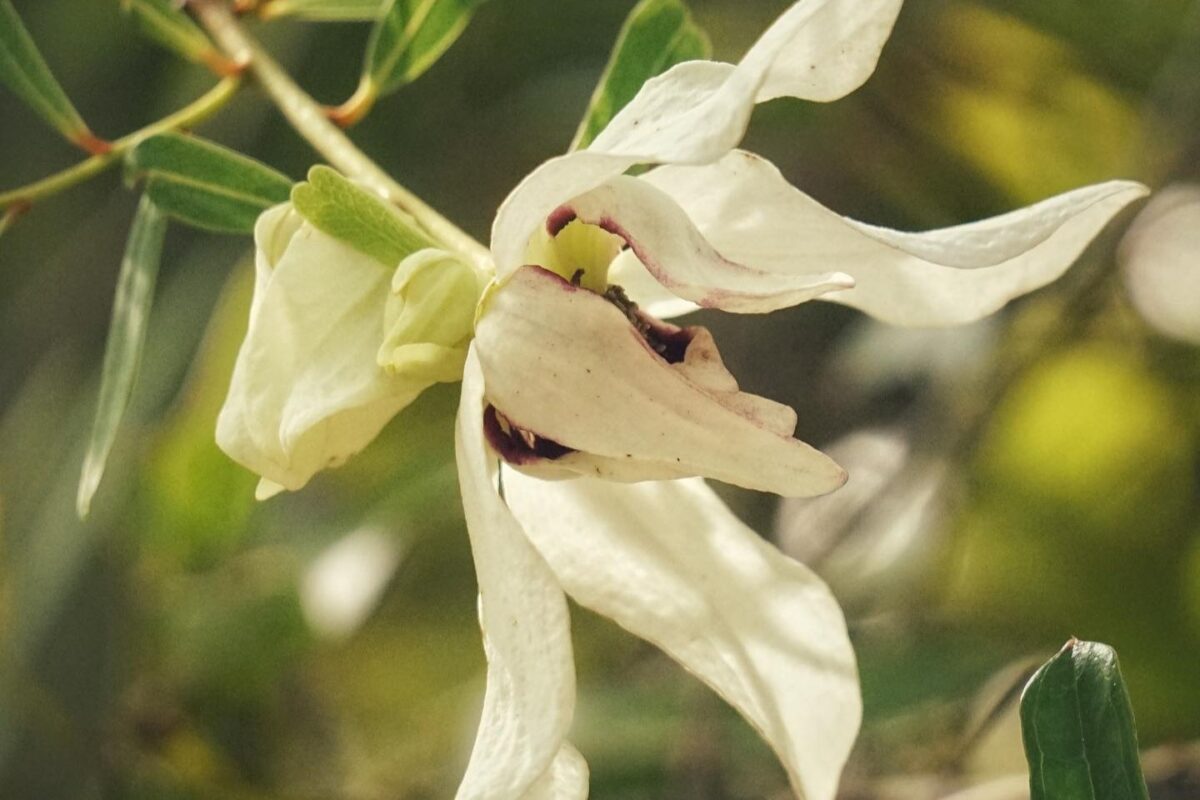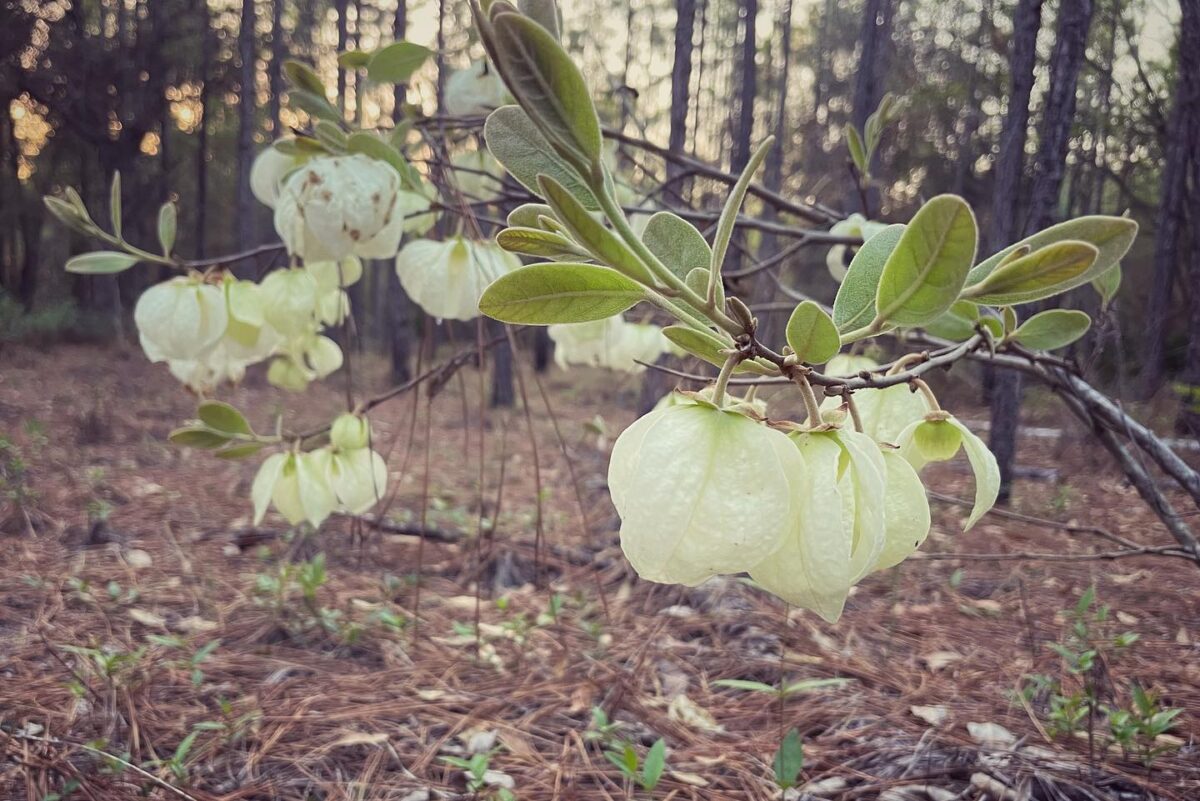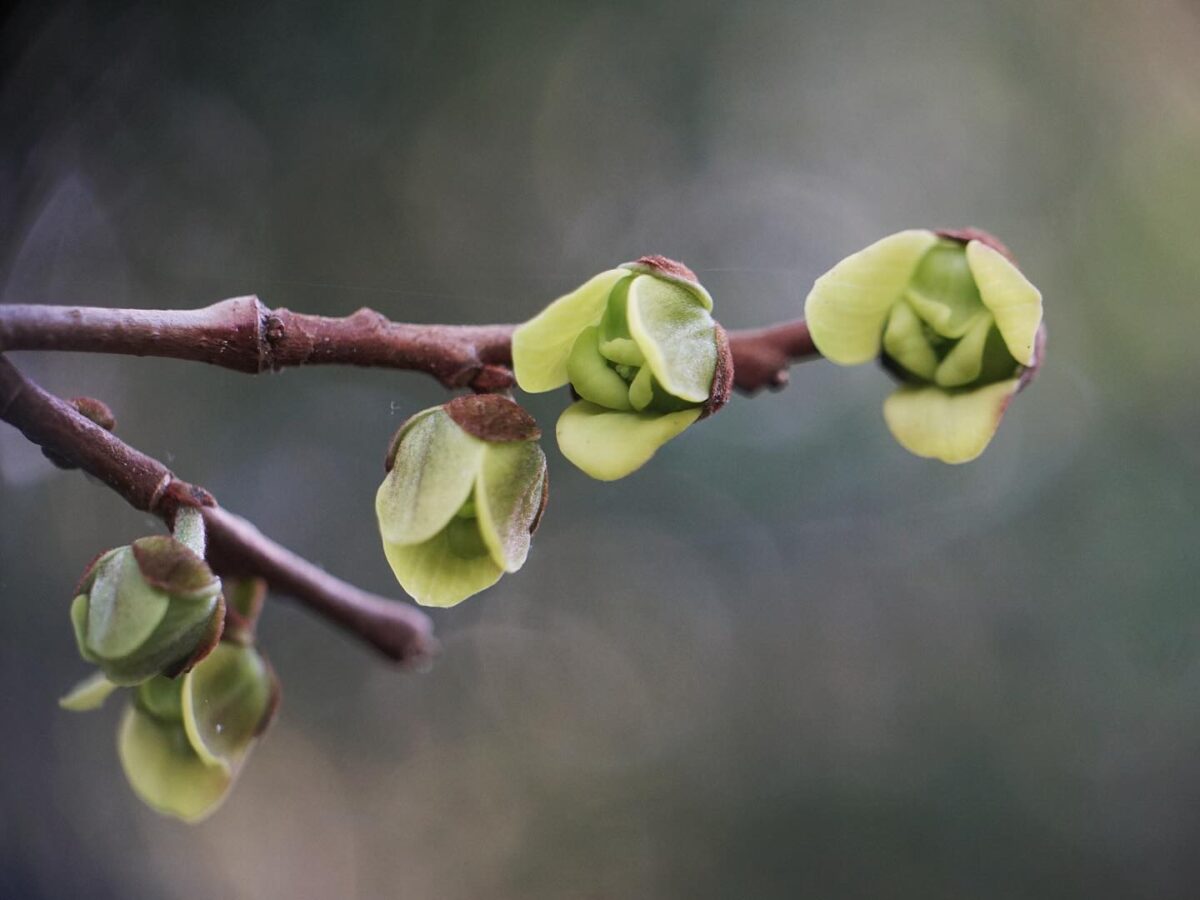Netted pawpaw
Pictured above: Netted pawpaw (Asimina reticulata) by Mary Keim. Click on terms for botanical definitions. View post as a PDF.
Netted pawpaw (Asimina reticulata) is a deciduous flowering shrub found in pine and scrubby flatwoods, sandhills and coastal scrub habitats throughout peninsular Florida. It blooms late winter through spring, producing many flowers that are pollinated primarily by flies and beetles. The plant is a larval host for the Zebra swallowtail butterfly and Pawpaw sphinx moth. The fruits, which appear in spring and summer, are a favorite of birds and small mammals.
Netted pawpaw’s fragrant showy flowers are creamy white with six petals. The three outer petals are large, oblong and outward spreading. Inner petals are small, fleshy and generally upright or inward pointing. All petals may have a purplish base. The blooms are axillary, nodding and appear before leaves emerge. Young leaf uppers are sparsely covered in orange hairs; undersides are densely covered. Mature leaves are elliptic to oblong, leathery, and have a glabrous upper surface and few orange hairs on the underside. Venation is reticulate. Leaf margins are entire to revolute. Leaf arrangement is alternate. Stems are woody and branched. Seeds are born in yellowish-green oblong to cylindrical berries. The plant has a long taproot.
The species epithet reticulata and the common descriptor “netted” refer to the plant’s reticulated or “netted” leaf veins.
While the fruits are edible for humans, it is hard to beat the wildlife to them! Additionally, they must be perfectly to almost overly ripe. According to experienced forager Green Dean, pawpaw fruit should be eaten with caution as some people have an allergic reaction to it. Check out his website for more information on edibility, as well as historical uses of the plant.
Family: Annonaceae (Custard apple or soursop family)
Native range: Peninsula, from Bradford County south to Miami-Dade; Hamilton County
To see where natural populations of Netted pawpaw have been vouchered, visit florida.plantatlas.usf.edu.
Lifespan: Perennial
Soil: Dry to moist, well-drained sandy soils
Exposure: Full sun to minimal shade
Growth habit: 2–4’+ tall
Propagation: Seed
Florida regions of landscape suitability: North, Central, South
Garden tips: Netted pawpaw is suitable for naturalistic landscapes as well as butterfly gardens. It may be pruned periodically. It does not transplant well. It is drought-tolerant once established, but cannot withstand exposure to salt.
Netted pawpaw is occasionally available from nurseries that specialize in Florida native plants. Visit www.PlantRealFlorida.org to find a nursery in your area.
Learn more about Netted pawpaw from the Florida Native Plant Society and the Institute for Regional Conservation.
For information on other Asimina species, see these resources:

